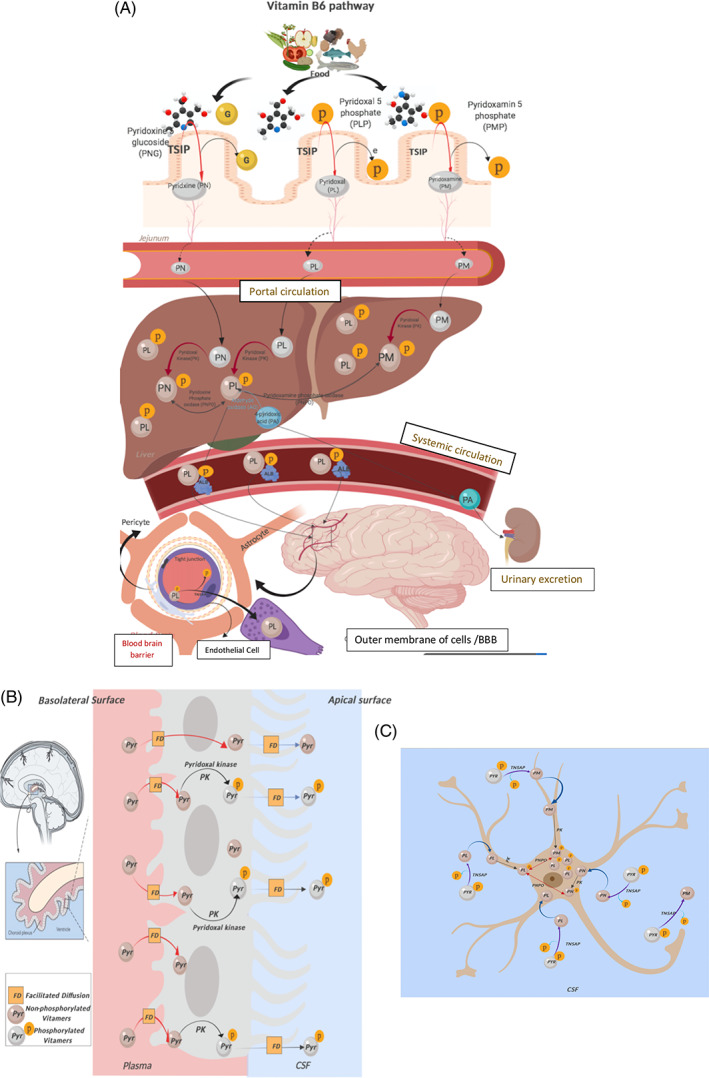FIGURE 1.

Vitamin B6 metabolism as it travels from the intestine to the portal circulation, crosses the blood‐brain barrier, and enters the brain cells. A, In the intestine, the dietary phosphorylated form is hydrolyzed to the free form by intestinal hydrolase (IH)/tissue‐specific intestinal phosphatase (TSIP) prior to absorption. This is followed by its uptake by intestinal cells, which is believed to occur through simple diffusion. Through portal circulation, the free B6 forms reach the liver, where metabolism in the liver is catalyzed by many enzymes. (1) Pyridoxal kinase (PK), (2) pyridoxal phosphate phosphatase, (3) pyridox(am)ine‐5′‐phosphate oxidase. B, The unphosphorylated forms of vitamin B6 are able to cross the blood‐brain barrier, probably by facilitated diffusion, mostly at the choroid plexus (CP). The CP traps PLP via pyridoxal kinase and can release PLP to a remarkable extent (and pyridoxal to a lesser extent). C, Excessive PLP in the CSF and extracellular space enters brain cells, and the B6 vitamers must be dephosphorylated so that they can enter brain cells and then metabolically trapped by being rephosphorylated by pyridoxal kinase. Pyridoxine phosphate and pyridoxamine phosphate are then oxidized by PNPO to form the active cofactor, PLP. PLP, pyridoxal 5′‐phosphate
